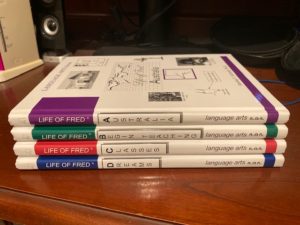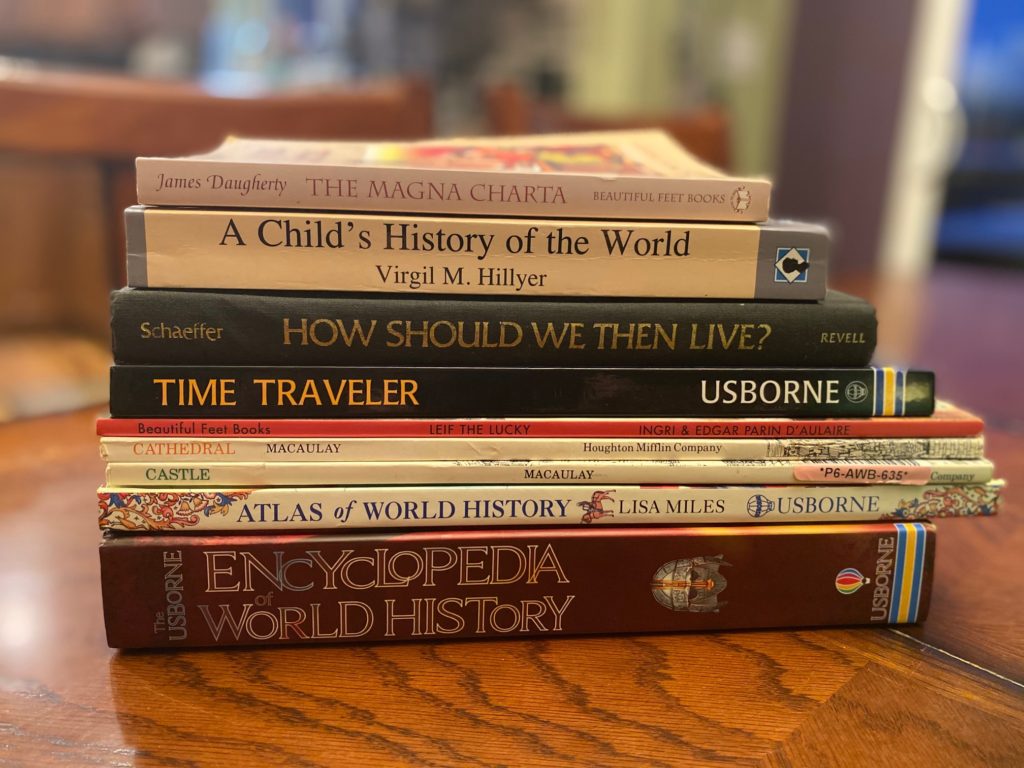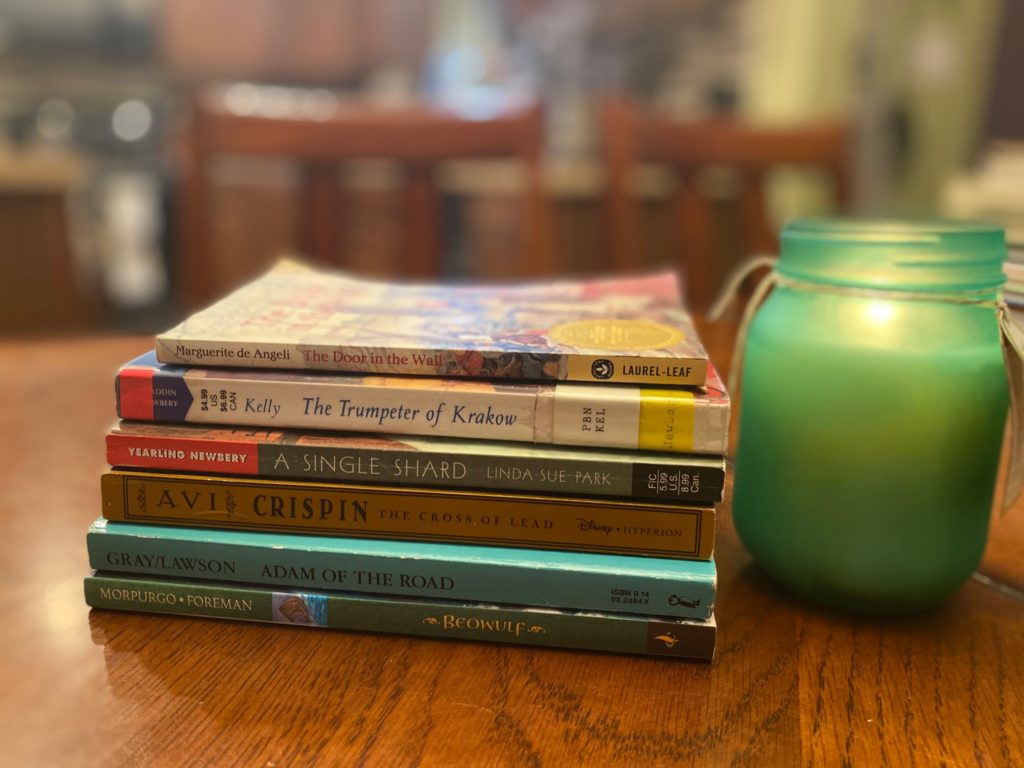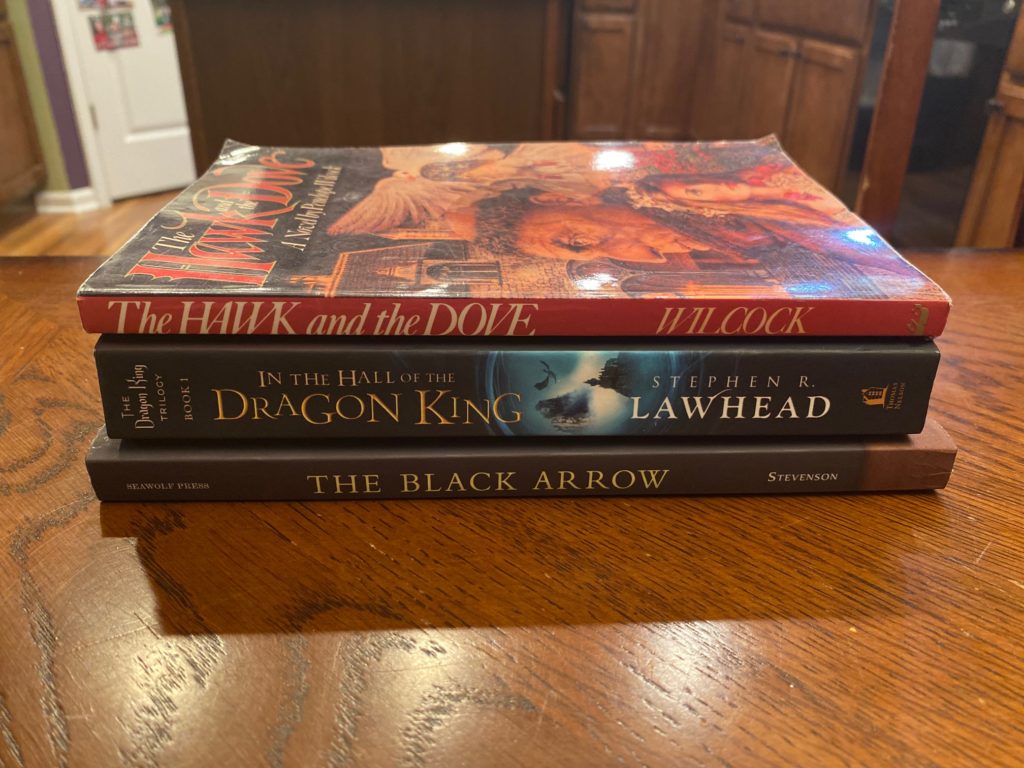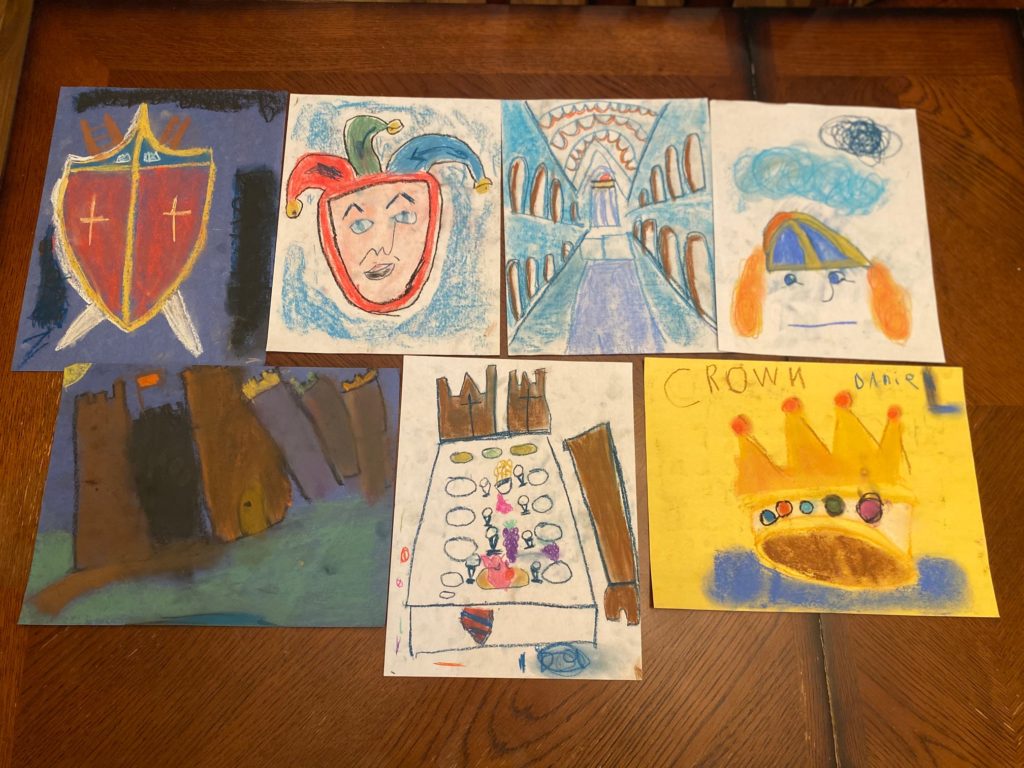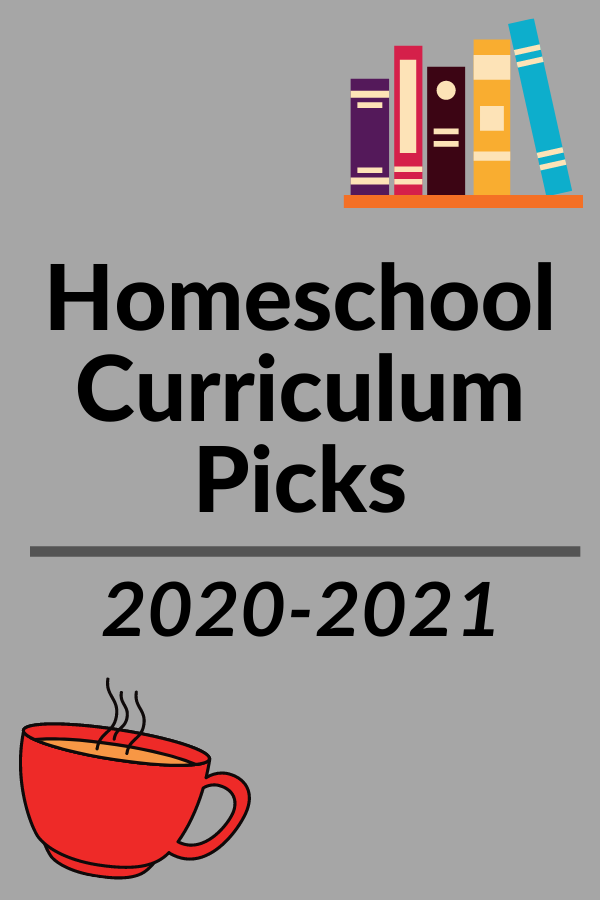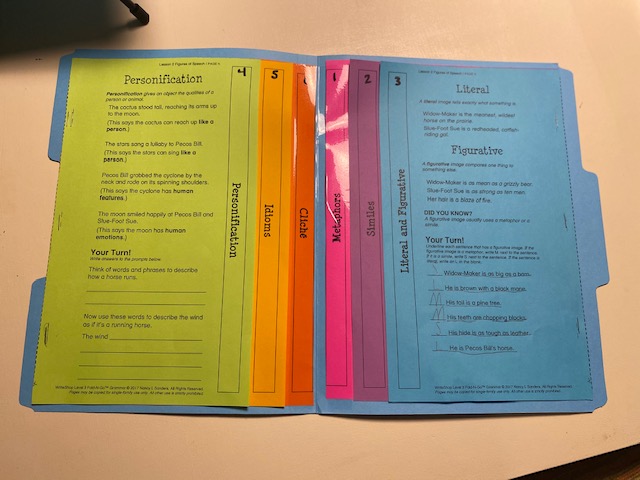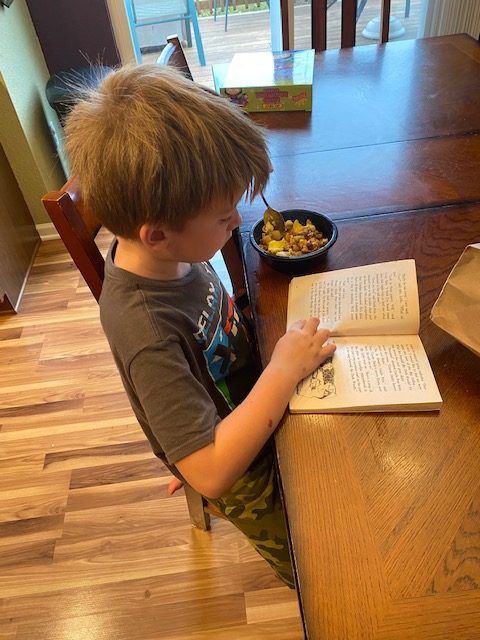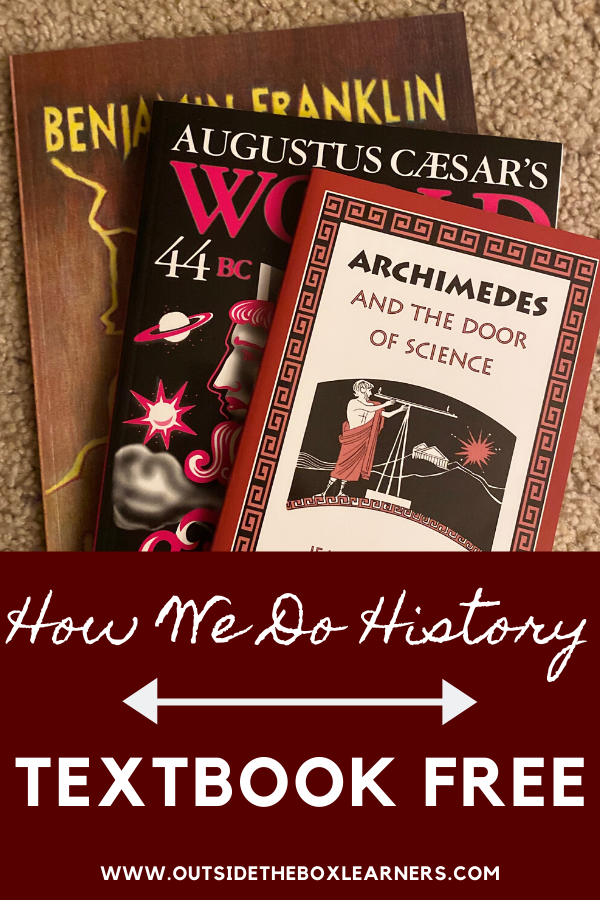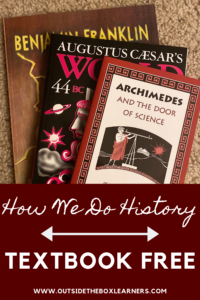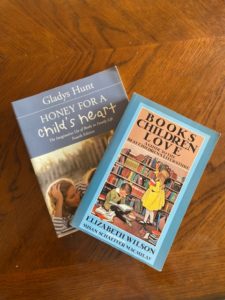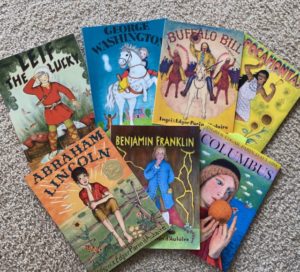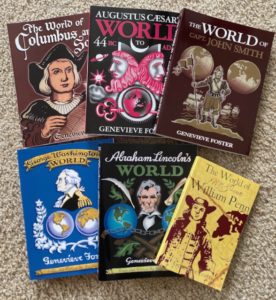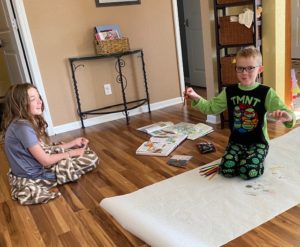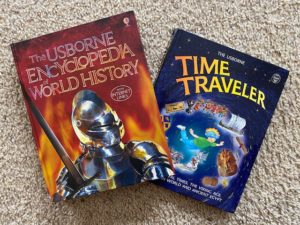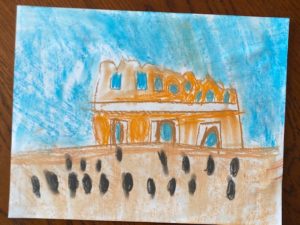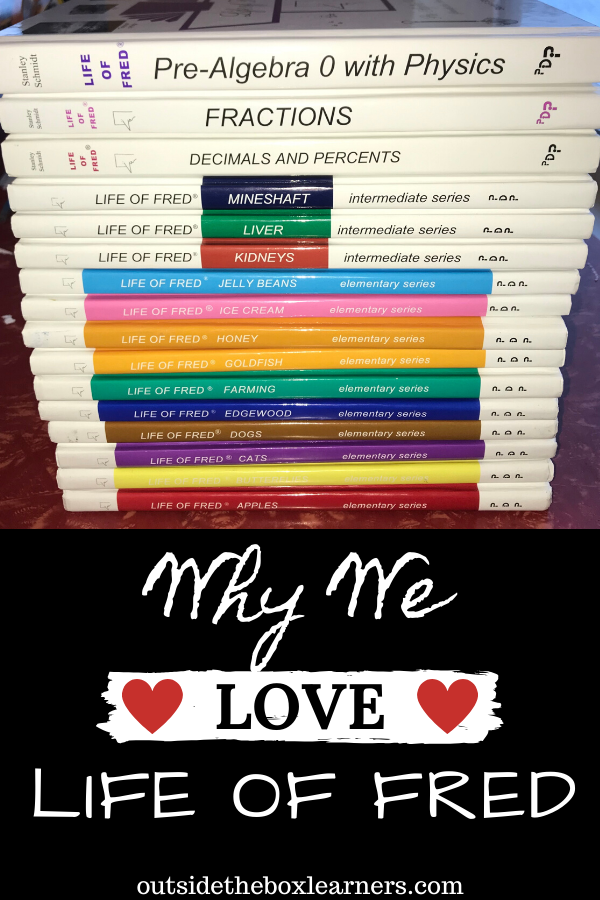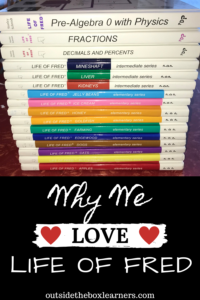Our Homeschool Curriculum Picks for 2021-2022
This year we have an 8th grader, a 6th grader, and a 2nd grader. Below are our curriculum picks for the 2021-2022 year.
This year I used Plan Your Year: Homeschool Planning for Purpose and Peace by Pam Barnhill while planning and found it to be helpful in organizing and prioritizing our goals for the year. As the kids get older, there are more opportunities for things to get involved in, and the ideas in this book helped me form a framework that has allowed me to see more clearly what activities to say yes and no to.
This blog post contains affiliate links and any purchases made through such links will result in a small commission for me (at no extra cost to you).
Curriculum Picks for 2021-2022

8th Grade:
Handwriting:
Getty Dubay Handwriting – Calligraphy
Writing:
I take more of an unschooling approach to writing with this kiddo. She does write often on her own, mainly fan fiction. She also writes for her creative writing class at our new co-op. As a natural writer, she loves to write and does best when she does so in a real-life setting that has a purpose.
Reading/Language Arts:
Last year, she finished all of the books in the Life of Fred Language Arts series.
We are doing a couple of different book clubs this year. This has been a great fit as she has been challenged to read books she wouldn’t normally read and also has the joy of getting to discuss them with others.
Math:
Life of Fred – Algebra: She’s still going strong with Life of Fred, and so we continue to use it.
Music:
Continued piano lessons
Choir and viola through a local music academy (this is new to us this year and has been a great addition to our schedule)
Visual and Performing Arts:
Participation in local theater productions..
This winter, she’ll be signing up for an online animation class.
6th Grade:
Handwriting:
Getty Dubay Handwriting
Writing:
We are continuing to use Writeshop which has been an amazing fit for this kiddo. It’s the perfect combination of fun and structure and we’ve really enjoyed using it. Writeshop includes grammar practice, presented in a colorful way. 🙂
We also do creative journal entries and have introduced some dictation this year (Dictation is when I read a few sentences from a book that he’s reading on his own and he has to copy what he hears into a journal.) Dictation is a gentle and natural way to practice spelling and punctuation/capitalization.

Reading/Language Arts:
Explode the Code – After many years, he just finished this series. 🙂
Book-wise, this kiddo usually has a good idea of what he wants to read. He spends a couple of hours a day reading, and these are some of his favorite series.
Math:
Masterbooks math – This is our main math curriculum for this child.
Math-It – He does this once a week to stay on top of his math facts.
Making friends with numbers – We discovered this fun workbook this past summer and it’s been a great resource for extra practice with multiplication facts.
Music
Piano lessons
Choir and recorder/drums/ukelele class through a local music academy.
2nd Grade:
Handwriting:
Getty Dubay
Writing:
Journal entries (very basic and as he wants to)
Reading/Language Arts:
Read aloud with me.
Independent Reading/Audiobooks
Explode the Code
Math:
The Good and the Beautiful Math – I received this at a discounted price last year and he enjoys it so we’ve continued to use it!
Math-It: We use this for daily math facts practice
STEM:
Kiwi Crates – Every month we get a kiwi crate in the mail and it is always a highlight for this kiddo.
For Everyone:
**The following subjects we do together during our “morning time”. We generally do Bible and History every day, and then loop/rotate the other subjects. This helps me stay sane! 🙂
Bible:
Picture-Smart Bible – We are almost done with the new testament, and will be moving to the old soon.
History:
Living Books exploring U.S. History. We plot the major events on our timeline as we go. Most of our books were purchased through Beautiful Feet Books – New Early American Intermediate Pack. We also got some from the middle and high school packs.
A Child’s History of the World by Virgil M. Hillyer and A Child’s First Book of American History by Earl Schenck Miers – Our history spines to read alongside the Living Books.
**For a more comprehensive post on how we homeschool history check out this post: Homeschooling History Without a Text Book!
Science:
No Sweat Nature Study – It is mainly the younger two doing this.
Guest Hollow Anatomy – This has been a lot of fun so far. All three kids are enjoying it (I pick and choose from both the junior and high school curriculums.) We especially love the hands-on projects!

Latin:
Getting Started With Latin by William E. Linney, though rather plain, has been a great fit for us. The pace at which the lessons move has worked really well.
Art:
Living Art Lessons – The boys and I are working through this book. It is pretty much an open-and-go art program and we are really enjoying it. We just finished up learning all about ‘lines’.
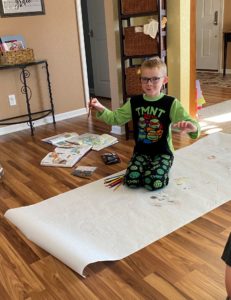
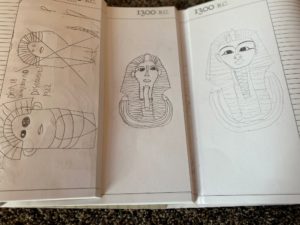

Unwrapping the Pharaohs: How Egyptian Archaeology Confirms the Biblical Timeline
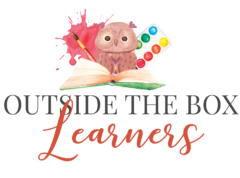
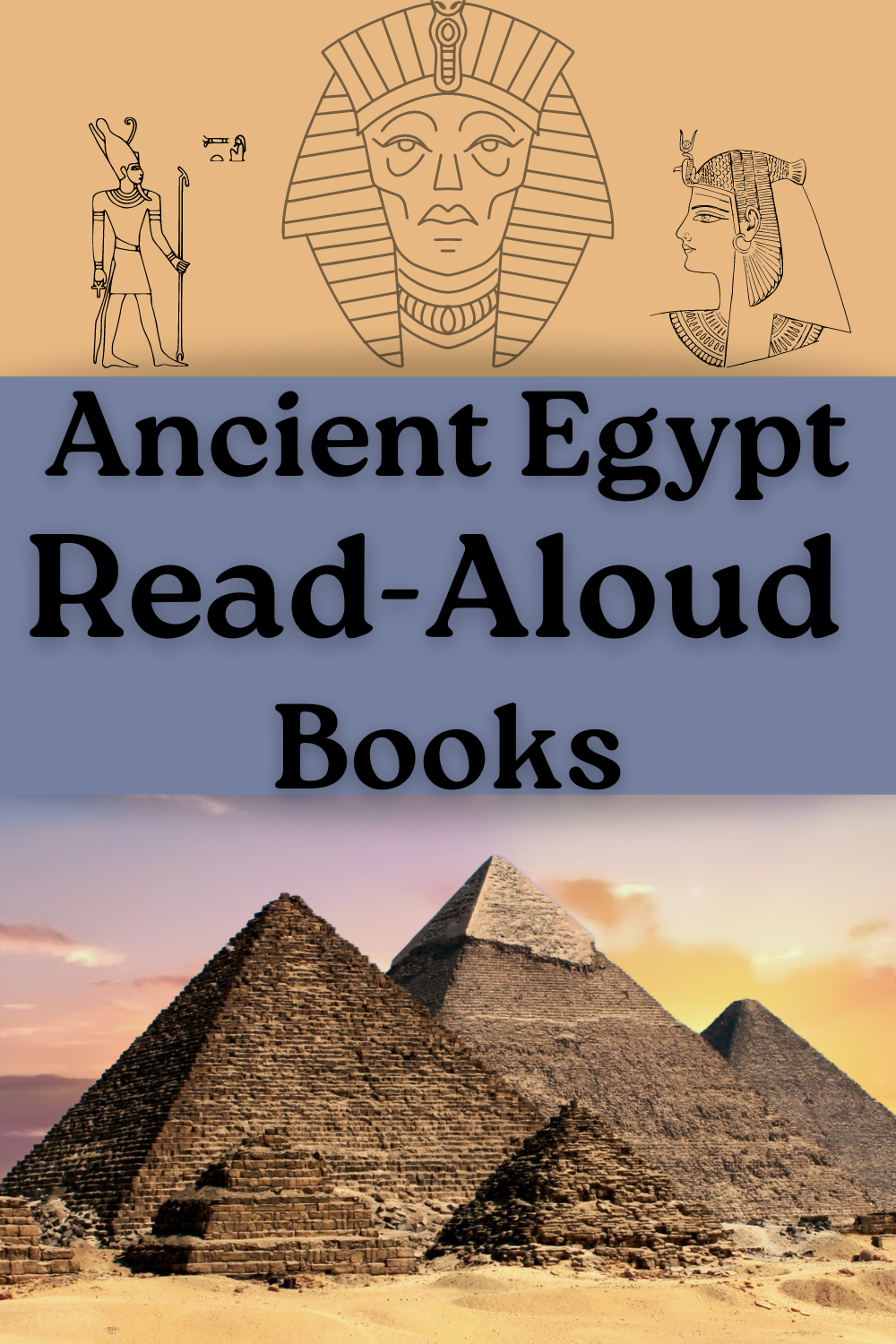




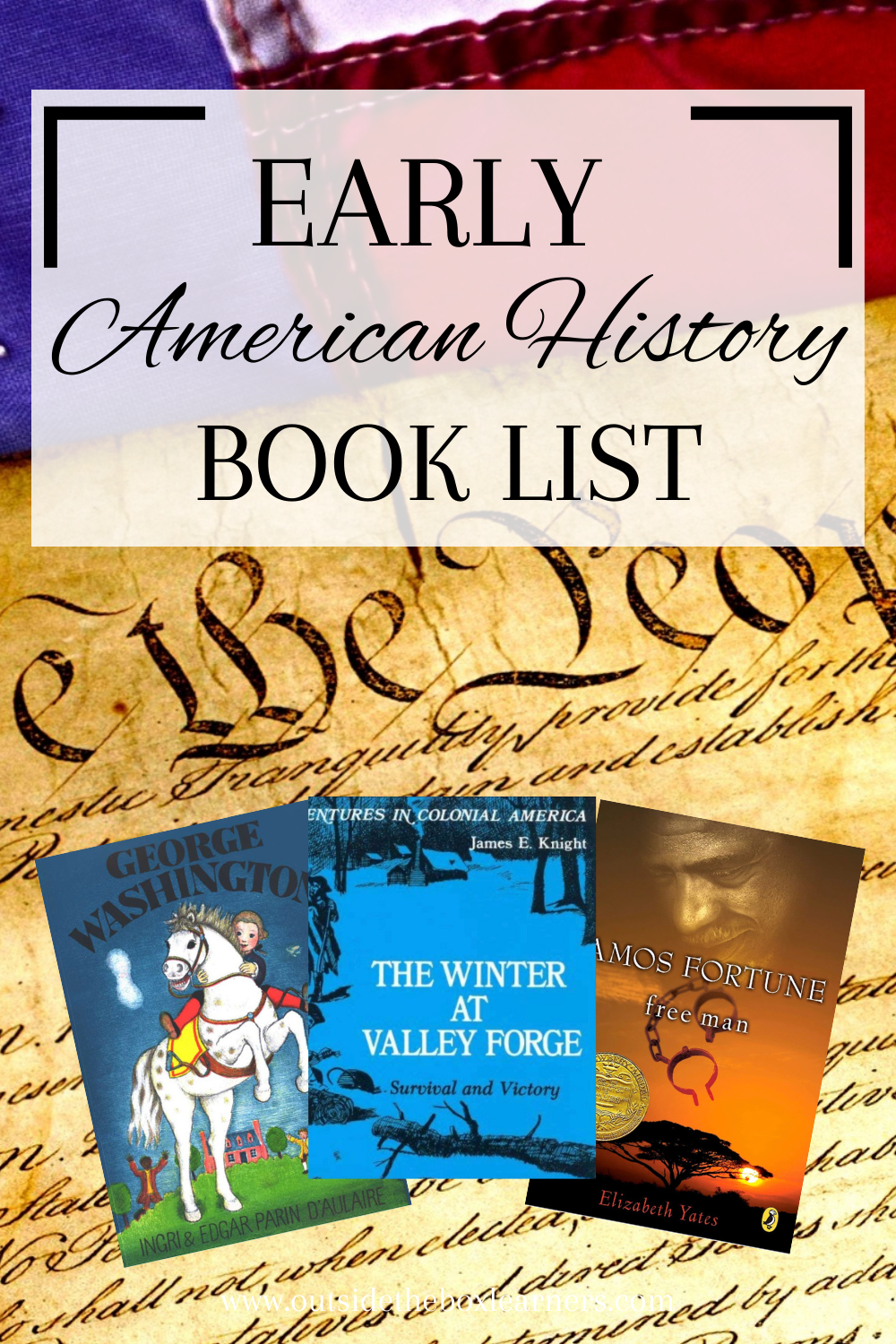


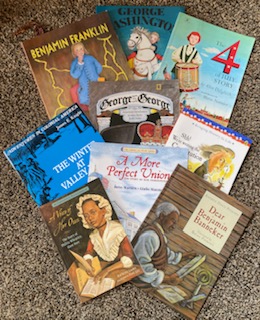

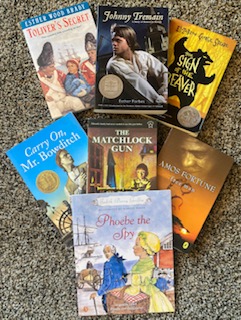

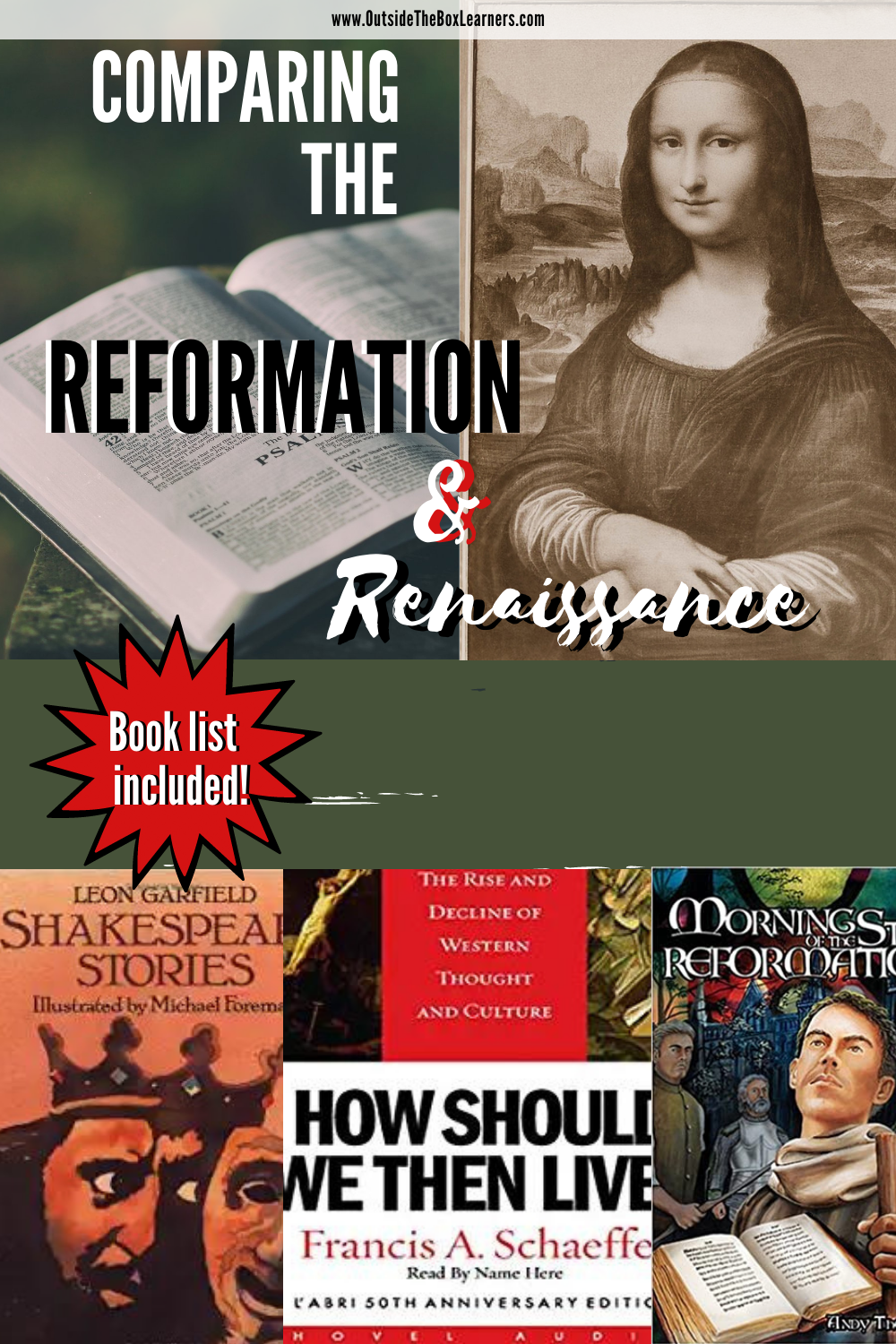












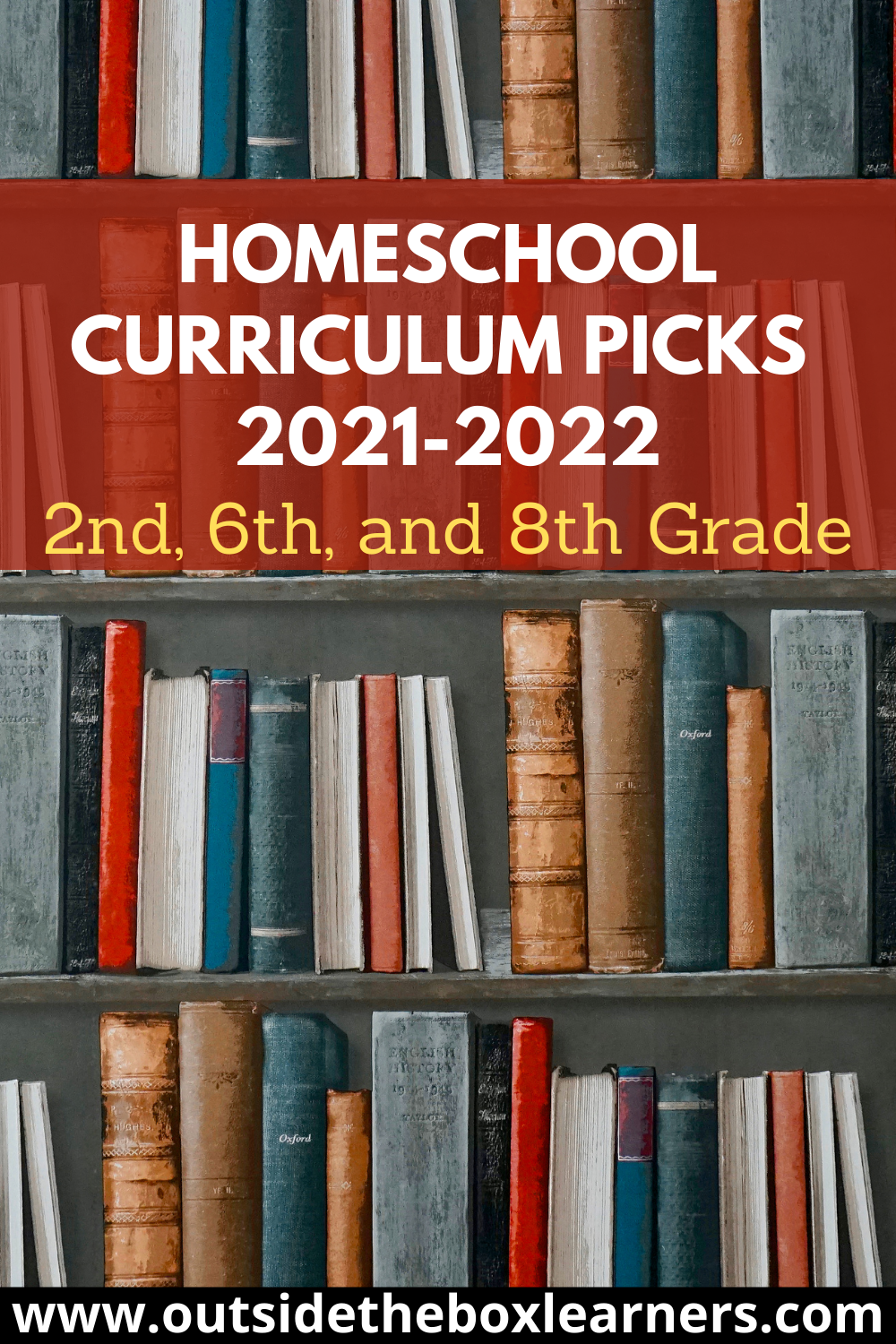



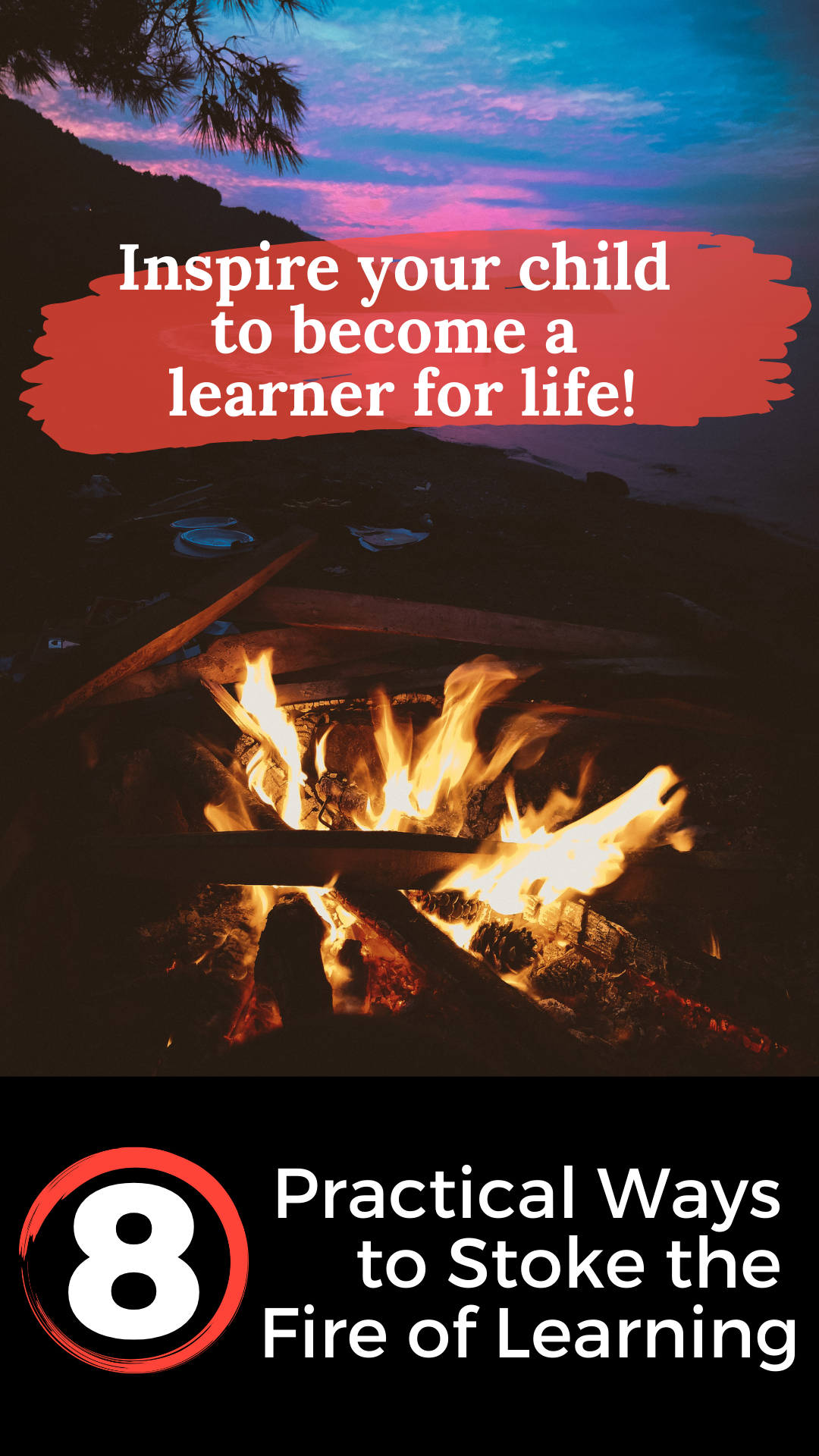
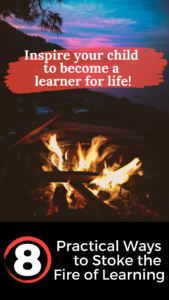

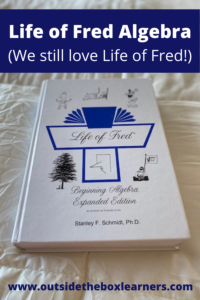
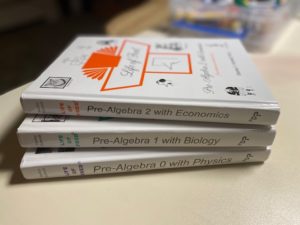 She thoroughly enjoyed the combining of pre-algebra with other subjects (well maybe not physics as much, though it did stretch her brain a bit!)
She thoroughly enjoyed the combining of pre-algebra with other subjects (well maybe not physics as much, though it did stretch her brain a bit!)